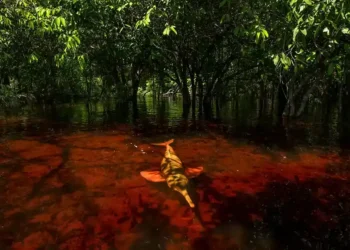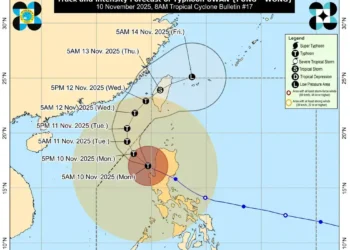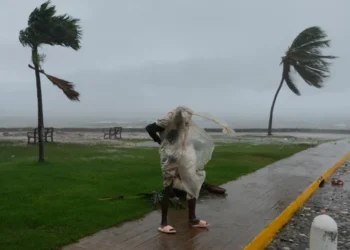Killer Whale Hunt Interrupted as Seal Climbs Onto Boat in Dramatic Salish Sea Encounter
A harbor seal fleeing a coordinated hunt by a pod of killer whales survived after leaping onto a wildlife photographer’s boat in Washington’s Salish Sea. The dramatic incident, captured on camera, highlighted the complex dynamics between marine predators and their prey in one of North America’s most active orca habitats.
Drucker, who has documented orcas for years, said the unusual encounter unfolded during a routine whale-watching trip. The seal’s sudden escape, combined with the orcas’ attempts to rock the vessel using a tactical wave maneuver, offered a rare look into behaviors that scientists have studied for decades.
Orcas Begin Coordinated Hunt Near Seattle
Charvet Drucker was on a 20-foot rental boat near her home in the Salish Sea, around 40 miles northwest of Seattle, when she spotted a pod of at least eight killer whales, also known as orcas. Their synchronized movements and strong tail slaps signaled they were actively hunting.
Using her camera’s zoom lens, she identified their target—a harbor seal darting away from the pod. At one point, the seal was flung into the air above the churning water as the orcas closed in. Drucker initially believed she was witnessing a typical predation event, a natural part of the marine ecosystem.
The National Oceanic and Atmospheric Administration (NOAA) notes that transient or Bigg’s orcas, which hunt seals, sea lions, and porpoises, rely on stealth, speed, and cooperation. Their hunts are typically quick and efficient, making extended chases like this uncommon.
Seal Climbs Onto Boat in Bid for Survival
As the orcas approached the boat, Drucker and her group followed wildlife guidelines and cut the engine to avoid injuring the whales. Within seconds, the seal surfaced next to the vessel and hauled itself onto the stern platform near the motor.
Wildlife rules prohibit physical contact or assistance, so Drucker kept her distance while she continued filming. In the video, the seal appears to look directly at her as she says, “You poor thing… You’re good, just stay, buddy.”
The moment underscored the seal’s desperate attempt to survive, using the boat as improvised shelter—a phenomenon that marine guides say is rare but not unheard of during intense hunts.
Orcas Attempt ‘Wave-Washing’ Strategy Against the Boat
Instead of abandoning the pursuit, the orcas regrouped and began using their bodies to displace water toward the boat. Drucker’s footage shows multiple whales lining up and diving in a staggered sequence to generate powerful waves.
This technique, known as “wave-washing,” has been documented by scientists since at least the 1980s, according to NOAA. It is often used by orcas to wash seals off ice floes or rocks in Arctic and sub-Arctic regions. Seeing it deployed against a boat—however unintentionally—was unusual and striking.
At one point, the seal slid off the platform, but managed to scramble back aboard as the orcas circled. After roughly 15 minutes of repeated attempts, the pod eventually abandoned the hunt and swam away.
Photographer Reflects: ‘Team Orca… until the Seal Was on the Boat’
For Drucker, the encounter was both thrilling and emotionally complex. She has photographed orcas feeding on seals and acknowledges the importance of predation in the marine food chain. Yet witnessing the hunted animal seeking refuge felt different.
“I’m definitely Team Orca, all day, every day,” she told The Associated Press. “But once that seal was on the boat, I kind of turned into Team Seal.”
Her footage and images quickly spread online, drawing attention to the unpredictability of wildlife encounters in the Pacific Northwest.
Transient Orcas vs. Resident Orcas
The pod involved in the pursuit consisted of Bigg’s or “transient” orcas, a subgroup known for hunting marine mammals rather than fish. Unlike resident orcas—whose diet relies heavily on chinook salmon and who are listed as endangered—Bigg’s orcas have thrived in recent years due to healthier prey populations.
NOAA reports that transient orcas typically travel in small groups and depend on stealth rather than vocalization during hunts. Their success has made them the dominant orca population in the Salish Sea.
The seal that sought refuge on Drucker’s boat was part of a prey base that supports these thriving orca populations. Yet, the dramatic escape also highlighted the resilience and adaptability of harbor seals, which are known for using rocks, kelp beds, and, in rare cases, boats to evade predators.
A Rare Glimpse Into Marine Predator-Prey Interactions
Scientists say that while encounters between orcas and seals are common in Washington’s coastal waters, human involvement—intentional or otherwise—is rare. NOAA guidelines emphasize maintaining distance from marine mammals and avoiding interference in natural behaviors.
Despite the seal’s successful escape, experts underscore that predation remains essential to the region’s ecological balance. Transient orcas help regulate marine mammal populations, while resident orcas provide insight into the effects of declining salmon stocks and shifting climate conditions.
For Drucker, the moment was a vivid reminder of both nature’s harshness and its unpredictability. As the seal eventually slipped back into the water and swam away unharmed, the photographer said she felt relief—but also respect for the orcas’ persistence.
This article was rewritten by JournosNews.com based on verified reporting from trusted sources. The content has been independently reviewed, fact-checked, and edited for accuracy, tone, and global readability in accordance with Google News standards.
Stay informed with JournosNews.com — your trusted source for verified global reporting and in-depth analysis. Follow us on Google News, BlueSky, and X for real-time updates.
JournosNews.com follows Google News content standards with original reporting, verified sources, and global accessibility. Articles are fact-checked and edited for accuracy and neutrality.










